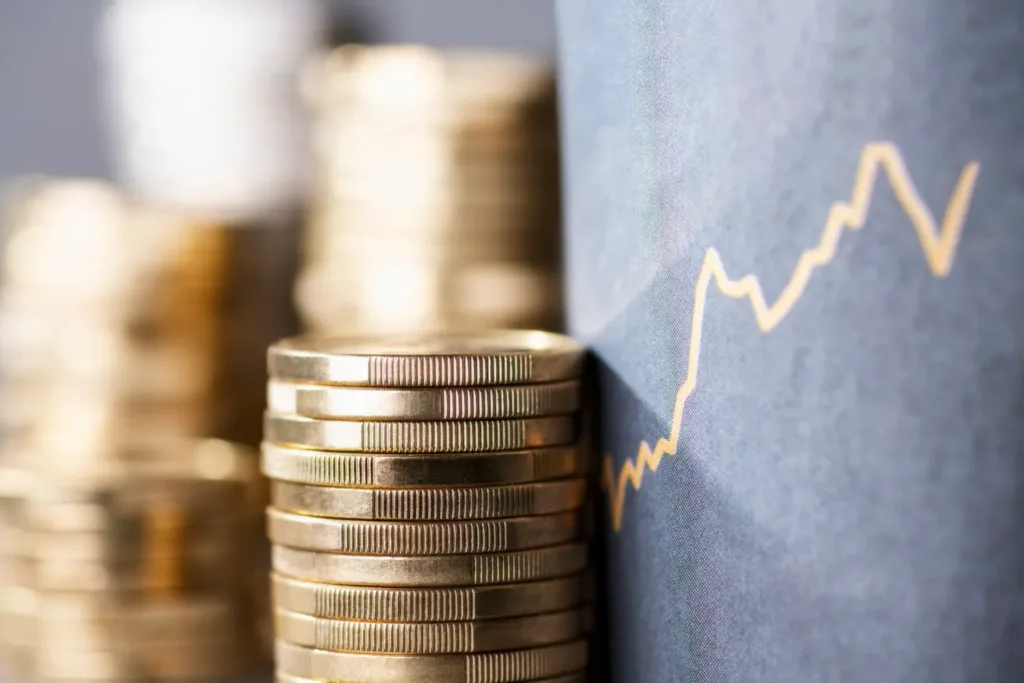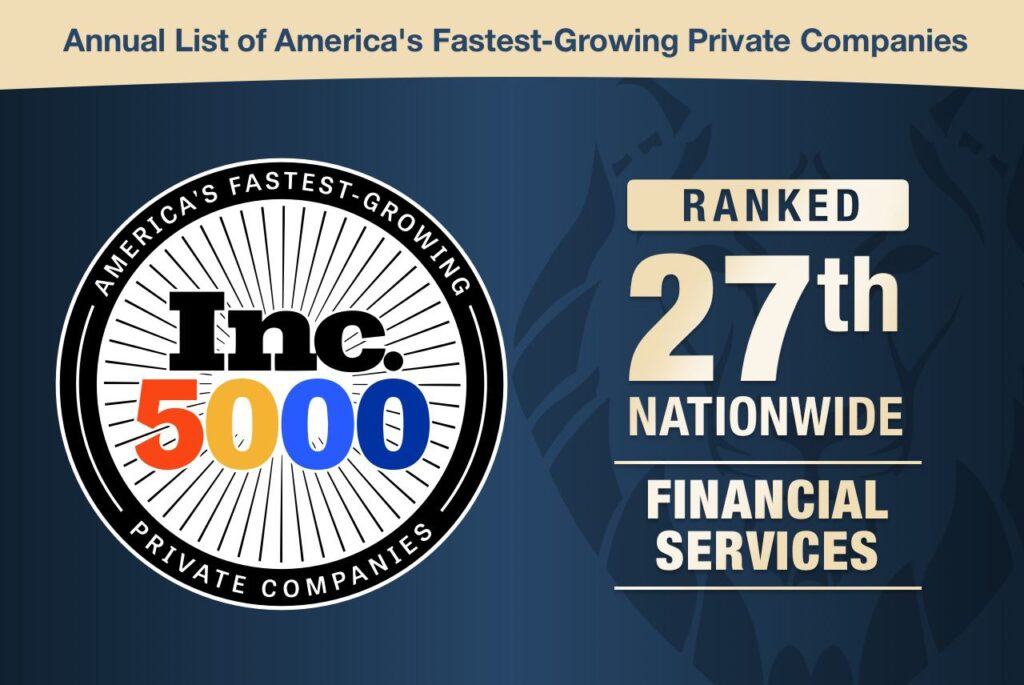Inflation is a hot topic right now, with prices increasing for almost everything. Many of us wonder why our money doesn’t go as far as it used to year-over-year. This article will explain what inflation means, the different types we see, and how experts determine how much things have inflated.
We’ll take a quick look back at history to see how inflation has changed things in the past and then dive into the reasons why prices are climbing so high today. Plus, we’ll discuss what this means for your wallet and share tips on keeping your money safe when prices rise. Join us as we explore why inflation is a big deal and what you can do about it.
What Is Inflation?
Inflation is when the prices of goods and services in an economy increase over time, making your money worth less than before. Think of it like this: Last year, you could buy a loaf of bread for two dollars, but this year, that same loaf might cost you $2.50. That extra 50 cents is a simple example of inflation in action. It’s a normal part of most economies but can cause headaches if it rises too fast or too high.
Economists keep an eye on inflation because it affects everything from how much you pay at the grocery store to the overall health of a country’s economy. Like the U.S.’s central bank, the Federal Reserve (the Fed) tries to control inflation by adjusting interest rates. They might raise rates to cool things down if inflation is too high.
The Consumer Price Index (CPI) is one tool they use to measure inflation, looking at the price change of a basket of goods and services over time. While a bit of inflation can signal a growing economy, too much can reduce the purchasing power of your dollar, making it harder to afford things you need or want.
What Are the Forms of Inflation?
Inflation manifests in several forms, each driven by different economic forces:
- Demand-Pull Inflation: This occurs when the demand for goods and services exceeds supply chains, causing prices to rise. An example is when consumer spending increases rapidly, but production cannot keep pace, leading to higher prices for limited goods.
- Cost-Push Inflation: Triggered by increased production costs, such as raw materials and wages, businesses then pass these on to consumers as higher prices. Increasing oil prices is a common cause, raising transport and production costs across various sectors.
- Built-In Inflation: This type of inflation reflects a cycle where workers demand higher wages to keep up with the cost of living increases. Employers, in turn, raise prices to maintain profit margins, leading to a cycle of wage and price increases.
- Hyperinflation: Extremely rapid and out-of-control inflation rates, often exceeding 50 percent monthly. It erodes the actual value of the local currency, as seen in Zimbabwe in the late 2000s, leading to the abandonment of the local currency for foreign currencies.
Each type of inflation has distinct causes and effects on the economy, requiring different policy measures to address.
How Is Inflation Measured?
Inflation is measured primarily through two key indexes: TheConsumer Price Index (CPI) and the Personal Consumption Expenditures (PCE) Price Index. Both indexes track the prices of a basket of goods and services over time, reflecting the cost of living.
Consumer Price Index (CPI)
Compiled by the Bureau of Labor Statistics, CPI measures the average change over time in the prices paid by urban consumers for a market basket of consumer goods and services. The CPI tracks spending in food, housing, apparel, transportation, and medical care categories. It’s a critical indicator of inflation used by the Fed and economists to gauge inflationary pressures within the economy.
Personal Consumption Expenditures (PCE) Price Index
This measure is broader than the CPI and includes more data on the types of individual expenditures. The Bureau of Economic Analysis reports that the PCE Price Index tracks the prices of goods and services consumed by individuals and adjusts more frequently for changes in consumer behavior. The Federal Reserve prefers the PCE as a gauge for setting monetary policies because it offers a broader view of inflation across the economy.
Both CPI and PCE are essential for understanding inflation’s impact on the economy, guiding the Fed’s decisions on interest rates to control inflation. For example, these measures indicate that significant rate hikes or adjustments in the federal funds rate may be implemented in response to rising inflation rates.
What Does History Say About Inflation?
Historically, inflation has significantly impacted the American economy, reshaping monetary policies, influencing economic growth, and altering the cost of living for Americans.
Here are notable examples:
The Great Inflation (1965-1982) period was marked by high inflation rates, peaking at over 13 percent in 1979 and 1980. It was driven by a combination of factors, including increased government spending during the Vietnam War and expansive monetary policy. The Federal Reserve, under Chairman Paul Volcker, raised interest rates drastically to combat inflation, leading to a recession but ultimately controlling inflation by the early 1980s.
During the 2008 Financial Crisis, following the housing market collapse and subsequent banking crisis, the U.S. experienced a period of low inflation due to decreased consumer demand and high unemployment rates. The Fed, led by Ben Bernanke, implemented a policy of low interest rates and quantitative easing to stimulate economic growth and avoid deflation.
The Pandemic-Era Inflation (2020-2022), known as the COVID-19 or coronavirus pandemic, led to unprecedented disruptions in supply chains, labor markets, and consumer demand.
Government stimulus measures, supply shortages, and a swift recovery in demand as economies reopened contributed to a surge in inflation. In 2021, U.S. inflation reached its highest levels in four decades, significantly impacting the cost of living, with notable increases in food, gas, and housing costs.
Each period highlights how governmental policy, economic conditions, and external shocks like the pandemic can influence inflation. The Fed’s role in managing monetary policy to control inflation through tools like interest rate adjustments and the federal funds rate is essential for stabilizing the economy during inflationary periods.
What Is Causing Inflation To Be So High Today?
The high inflation rate we’re experiencing today is attributed to several intertwined factors, profoundly impacting economies worldwide.
Let’s break down the major causes of inflation pressure we are experiencing right now:
Pandemic-Related Supply Chain Disruptions
COVID-19’s global spread led to significant disruptions in production and supply chains. Factory shutdowns, labor shortages, lockdowns, and transportation bottlenecks have resulted in a scarcity of various goods. As economies reopened, demand surged, but supply couldn’t keep pace, pushing prices up across many sectors.
Expansive Monetary Policies
In response to the economic impact of the pandemic, central banks, including the Fed, implemented expansive monetary policies. These included lowering interest rates to historic lows and quantitative easing, which significantly increased the money supply in the economy.
While these actions aimed to stimulate economic activity by making borrowing cheaper, they also increased the amount of money chasing a limited supply of goods and services, contributing to price increases.
Government Stimulus Measures
Governments worldwide, including America, passed substantial stimulus packages to mitigate the pandemic’s economic fallout. While these funds were important for maintaining consumer spending and supporting unemployed workers, they also increased demand for goods and services, further fueling inflation.
Rising Energy and Food Prices
Conflicts such as the Russia-Ukraine war have exacerbated already rising energy prices, affecting everything from gasoline to natural gas prices. Similarly, food prices have climbed due to various factors, including adverse weather conditions affecting crops and supply chain disruptions.
These essential categories significantly contribute to overall inflation rates, as they are integral to direct consumer expenses and the costs of producing a wide range of goods.
Labor Market Dynamics
As businesses struggled to find workers amidst reopening economies, wages have risen in many sectors to attract employees. These increased labor costs are often passed on to consumers through higher prices for services and goods, contributing to the inflation spiral.
Housing Market Boom
Low interest rates and a pandemic-driven desire for more space led to a surge in home buying and renovations, significantly driving up the costs of real estate and rent. This increase in housing costs is a significant inflation rate component, as housing represents a large part of consumer expenditures.
Continued Global Supply Chain Issues
The pandemic highlighted the fragility of the global supply chain, with delays and shortages becoming more common for everything from semiconductors to essential commodities. These ongoing issues increase costs for manufacturers and lead to higher prices for consumers, perpetuating the cycle of inflation.
These factors, from massive shifts in consumer behavior to global geopolitical tensions, have created a complex scenario for economies. Central banks, particularly the Fed, face the challenge of curbing inflation by tightening monetary policy — raising interest rates and potentially reducing the money supply — without precipitating a significant economic downturn.
The path forward requires a careful balancing act to control inflation while supporting continued economic recovery and growth.
How Does Inflation Affect Your Finances?
Inflation significantly influences your financial well-being, subtly altering your economic landscape in ways that might not be immediately noticeable but have long-term effects.
As prices rise, the immediate consequence is a reduction in your money’s purchasing power — what $100 could buy last year costs more now. This erosion of value extends to your savings as well. With inflation outpacing the interest rates on savings accounts, the actual value of your saved money diminishes over time, complicating efforts to achieve long-term financial goals.
Investments become a mixed bag in inflationary periods. Equities or stocks may provide a hedge against inflation, as companies can adjust prices to maintain profitability. However, fixed-income investments like bonds lose appeal since their fixed returns buy less in the future.
Another aspect touched by inflation is wages, which often do not increase at the same pace as inflation, leading to a decrease in real income and purchasing power, thus straining household budgets.
Inflation’s effect on debt varies. Fixed-rate loans become relatively cheaper over time due to inflation, whereas variable-rate debts may increase interest costs. The general cost of living inevitably climbs, affecting everything from groceries to healthcare, forcing consumers to reassess their spending priorities.
The Fed might counteract rampant inflation by raising interest rates to cool down the economy. While effective, this approach makes borrowing more expensive, impacting loans for homes, vehicles, and other significant purchases, thus potentially dampening economic growth.
How To Protect Your Money Today
Diversifying your portfolio is essential to protecting your money against inflation and economic uncertainty. Including precious metals like gold and silver in your asset portfolio can offer a hedge against inflation, as they tend to retain value over time.
Additionally, consider exploring other assets such as real estate, stocks, and bonds to spread risk. Ensuring your savings are in high-yield accounts can offset the effects of inflation. Finally, stay informed and adaptable to the changing economic landscape to make timely adjustments to your financial strategy.
The Bottom Line
Inflation impacts the economy and personal finances, driving up prices and eroding purchasing power. Understanding its causes, including supply chain disruptions and increased consumer demand, is essential for working through its effects. Protecting your finances involves strategic purchases like precious metals, which have historically preserved wealth amidst inflationary pressures.
Diversifying your portfolio and staying informed can help mitigate inflation’s impact. American Hartford Gold offers a range of precious metal options for those looking to safeguard their assets or open a gold IRA.
Contact us today to learn how to protect your financial future against the unpredictability of inflation.
Sources:
Inflation, explained: Why prices keep going up and who’s to blame | CNN Business
The Great Inflation | Federal Reserve History
Unpacking the Causes of Pandemic-Era Inflation in the US | NBER
Inflation Is Still High. What’s Driving It Has Changed. | The New York Times






